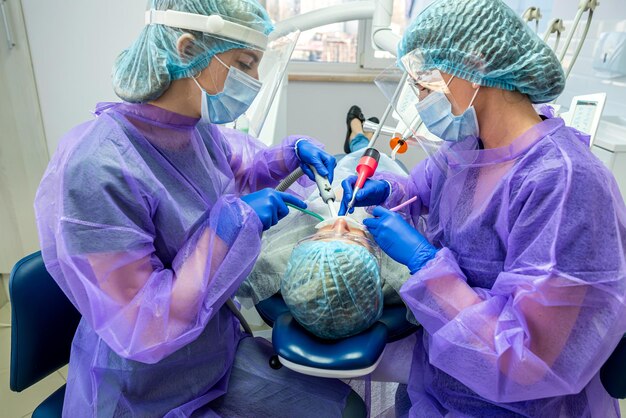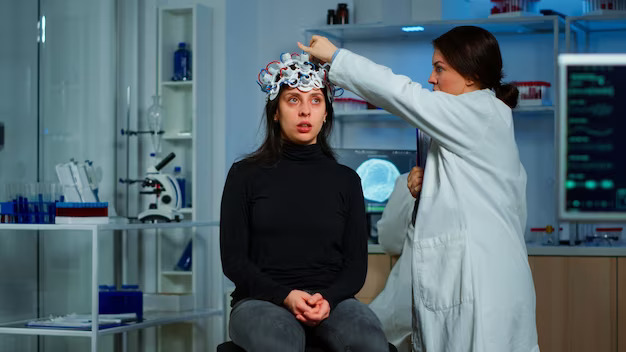Stereotactic Neurosurgery Treatment Gurgaon
Stereotactic neurosurgery represents a groundbreaking approach in the treatment of various brain disorders, offering precision and minimal invasiveness. In Gurgaon, this advanced medical procedure is expertly handled by Dr. Aditya Gupta, a renowned neurosurgeon with a distinguished career in neuro-oncology, epilepsy surgery, and functional neurosurgery.


Definition of Stereotactic Neurosurgery
Stereotactic neurosurgery is a minimally invasive surgical technique that uses 3D imaging to locate small targets within the brain. This precise method allows for the treatment of complex neurological conditions with reduced risk and improved outcomes. It’s commonly used for biopsies, the treatment of movement disorders such as Parkinson’s disease, epilepsy, and the management of brain tumors.
Why Choose Artemis For DBS Treatment in Gurgaon?
Application of Stereotactic Neurosurgery
Treating Brain Tumour
Stereotactic neurosurgery is widely used in the treatment of brain malignancies. It enables neurosurgeons to accurately target and remove tumours while causing minimal harm to adjacent healthy brain tissue.
Management of Movement Disorders
This innovative surgical procedure is used to treat Parkinson’s disease and essential tremors. Stereotactic neurosurgery, which targets particular parts of the brain responsible for certain illnesses, can reduce symptoms and improve patients’ quality of life.
Chronic Pain Relief
Stereotactic neurosurgery can help patients with chronic pain disorders like trigeminal neuralgia or migraine. This surgery, which specifically targets pain-generating areas in the brain, can give long-term relief from chronic pain.
Procedure of Stereotactic Neurosurgery Treatment in Gurgaon
There is no incision; thus, this is not standard surgery. Instead, stereotactic radiosurgery uses 3D imaging to deliver high doses of radiation to the afflicted region while minimizing the impact on healthy tissue nearby.
Stereotactic radiosurgery, like other types of radiation, causes DNA damage in the targeted cells. The damaged cells lose their capacity to increase, causing tumours to shrink.
Stereotactic radiosurgery for the brain and spine is normally performed in a single session. Body radiosurgery is used to treat lung, liver, adrenal, and other soft tissue malignancies, and it usually requires three to five sessions.
1. Preoperative Planning
Preoperative planning includes thorough imaging examinations, such as MRI or CT scans, to map the brain’s architecture. This information is utilized to generate a three-dimensional coordinate system that directs the surgical procedure.
2. Frame Placement
During the Stereotactic Neurosurgery Treatment in Gurgaon, a specific frame is firmly connected to the patient’s head for stability and precision. The frame serves as a reference point for the three-dimensional coordinate system that targets specific parts of the brain.
3. Target Localization
Using modern imaging methods and specialized software, neurosurgeons accurately identify the target location within the brain. Tumor biopsies, lesion ablation, and electrode insertion for deep brain stimulation are all possible options.
4. Intervention
Unlike other therapies, DBS provides long-term symptom reduction, with many patients reporting ongoing improvements for years following the operation.

Benefits:
Precision
Stereotactic neurosurgery offers high accuracy, which is a key benefit. Neurosurgeons can improve treatment results and reduce problems by carefully targeting particular parts of the brain.
Minimally Invasive
Stereotactic neurosurgery is often less invasive, with smaller incisions and quicker recovery periods than standard open operations. This helps patients to resume their typical activities faster and with less discomfort.
Risk Free
While stereotactic neurosurgery has many advantages, it is not without danger. Infection, haemorrhage, and brain injury are all possible consequences. Patients should consult with their healthcare professional about the risks and advantages of the operation before having therapy.
Conditions Treated With Stereotactic Neurosurgery
Arteriovenous Malformations (AVMS):
AVMs are aberrant tangles of blood arteries in the brain that can lead to neurological symptoms or bleeding. Stereotactic neurosurgery can be used to target and treat congenital anomalies while lowering the risk of consequences.
Trigeminal Neuralgia:
This persistent pain ailment causes significant face agony. Stereotactic neurosurgery, such as microvascular decompression or gamma knife radiosurgery, can successfully treat pain by targeting the trigeminal nerve.
Epilepsy:
Stereotactic neurosurgery can be a therapy option for people with epilepsy who do not respond to medication. Seizures can be considerably decreased or completely eradicated by locating and surgically eliminating the epileptic focus.
Pituitary Tumors:
Stereotactic neurosurgery is a typical treatment for pituitary tumours, which can cause hormonal abnormalities and neurological symptoms. Neurosurgeons can safely remove tumors while maintaining normal pituitary function by properly targeting them.
Movement Disorders:
Stereotactic Neurosurgery Treatment in Gurgaon can effectively treat Parkinson’s disease, essential tremor, and dystonia. Deep brain stimulation, a kind of stereotactic neurosurgery, entails implanting electrodes in particular brain areas to control aberrant neural activity and relieve symptoms.
Conditions Treated with Stereotactic Neurosurgery
- Brain Tumors: Precise targeting allows for effective biopsy and treatment of tumors, minimizing damage to surrounding healthy tissue.
- Parkinson’s Disease: Deep brain stimulation (DBS) can significantly improve symptoms and quality of life for patients.
- Epilepsy: Stereotactic techniques help in pinpointing seizure foci, leading to more effective surgical outcomes.
- Movement Disorders: Conditions such as essential tremor and dystonia can be managed with high accuracy, improving motor function.
Conclusion
For those seeking effective and precise treatment for complex brain conditions, stereotactic neurosurgery under the expert care of Dr. Aditya Gupta in Gurgaon stands out as an exceptional option. His dedication to patient care, combined with advanced surgical techniques, ensures that patients receive the best possible outcomes.
QUICK CONTACTS
- Phone : +91-9910094615
- Email : dradityaguptaofficial@gmail.com
-
Address : Artemis Hospitals Sector 51 Gurgaon, Haryana, 122001, India

